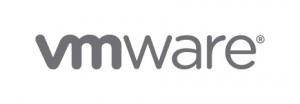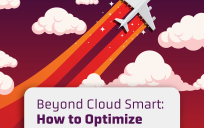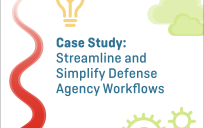This blog post is an excerpt from GovLoop’s recent guide, “Taking Government Cloud Adoption to the Next Level.”
By now, most agencies have moved some or all of their data to the cloud. Whether it is a public, private, or hybrid solution, cloud offers governments the ability to consolidate their physical datacenters and to store data virtually in a cost effective and secure way. Typically, cloud solutions have been delivered to fit an organization’s computing resource requirements at the time of purchase. However, many agencies are finding that their evolving needs aren’t being met by one-size-fits all solutions.
As a result, vendors are looking for ways to provide agile cloud services that adjust to governments’ needs as their computing resources grow or shrink. In order to better understand this, GovLoop sat down with Kurt Steege, Chief Technology Officer at ThunderCat, a systems integrator that brings an innovative approach to solving datacenter challenges.
When cloud solutions first hit the market, Steege explained, governments were initially a little slow to adopt. However, once agencies started adopting cloud solutions, many looked at them as a system replacement, tried to determine their computing resource requirements up front, and adopted “out of the box” cloud models that weren’t scalable as agencies’ needs evolved. This is problematic, as agencies were wasting money on services they weren’t utilizing.
Today, agencies must change their mindset towards cloud in order to overcome this challenge. “We need to start thinking about clouds as services that can be relied upon to deliver workloads. In the same vein, we can begin to look at different “cloud-as-a-service” solutions to provide something that is needed and that maintains a high level of service throughout
the implementation of the solution,” Steege said. Viewing cloud through a services lens enables agencies to use solutions that
are scalable and elastic and able to provision resources as they are needed and on demand through software orchestration—a function that is key to agencies meeting mission needs effectively.
In addition to the agility it offers, switching to a services-based model also allows agencies to become more cost and time efficient. “One of the biggest benefits of moving to a services based architecture is the reduced cost,” Steege said. By switching to a service, agencies aren’t only saving money on the initial price tag of solutions, but on the time that it takes to get these solutions up and running. That’s because the procurement and security cycles for acquiring and configuring infrastructure are often times consuming and cumbersome. Steege explained that the process to get new infrastructure built and running takes a lot of time because agencies must get every element certified to meet agency or federal government requirements.
“On the other hand, when you talk about the acquisition of cloud or a services based infrastructure, you are able to get a product that has already been vetted for 80 to 90 percent of those requirements,” he explained. “You don’t have to retest it because it has already gone through federal and agency specific security tests and is ready to be deployed.” As a result, agencies are using less time and less money, allowing them to spend more on other initiatives that provide value to their mission.
However, it is hard for agencies to reap these benefits of the as- a-service model on their own. Steege explained that partnerships are critical to government organizations effective adoption of a cloud service solution. “At ThunderCat, we like to take on a trusted advisor role where agencies come to us with a problem and we can give them advice to help them solve it,” Steege said. “I think that’s what really sets us apart, we do what we can to drive ours and the government’s mutual missions of protecting the American public.”
One way that ThunderCat helps agencies helps solve services based issues is by connecting governments with other governments. “We’ve gotten folks together with other government agencies and explain that they are facing similar situations and we broker those government-to-government discussions,” Steege explained. By providing partnership options to agencies from across the sectors, ThunderCat can facilitate more seamless and effective adoption of as-a-service solutions. They also work with agencies to research and recommend solutions that match their individual needs.
Companies like VMware have also adapted to meet the needs of government agencies by helping to build and support multiple cloud architectures across public, private, hybrid and even down to the newer container-based microservices.
Looking forward, adopting cloud in an as-a-service model has the potential to play a major role in addressing inefficiencies and improving service delivery in government. By taking full advantage of cloud-as-a-service benefits, agencies can maximize capacity utilization and improve IT flexibility and responsiveness all while minimizing the costs it takes to do so.
For more information about taking cloud to the next level, you can find the full guide here.







Leave a Reply
You must be logged in to post a comment.